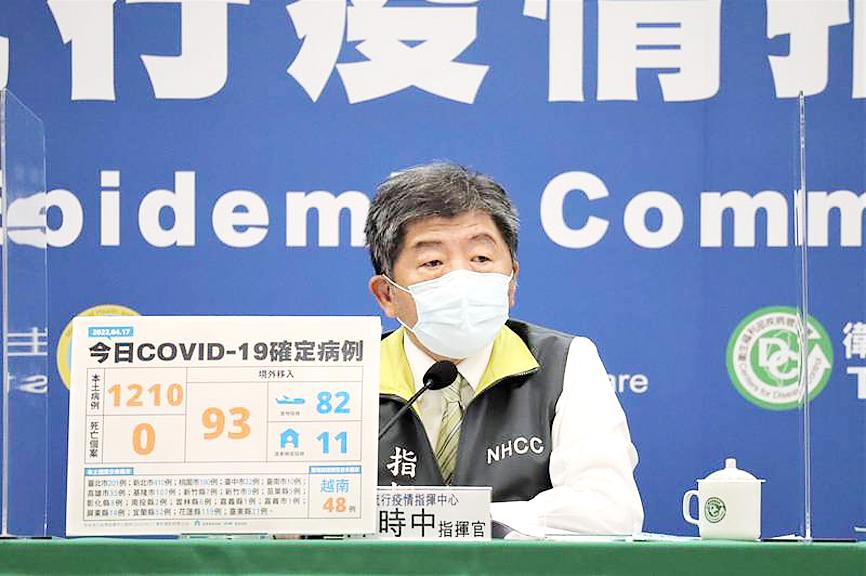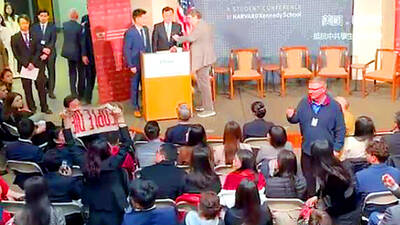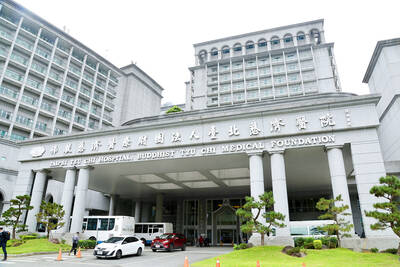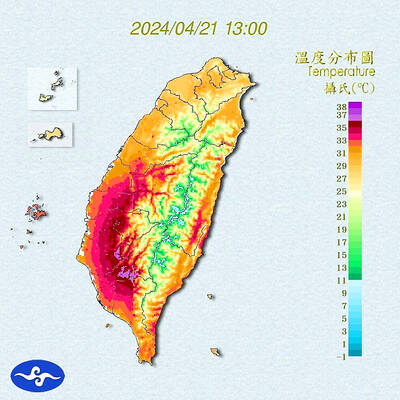The Central Epidemic Command Center (CECC) yesterday distributed 400,000 rapid test kits to areas of Taiwan with the greatest risk of infection, as it reported 1,210 new domestic and 93 imported cases.
Taipei, New Taipei City, Taoyuan and Hualien County yesterday each received 100,000 at-home test kits, said Minister of Health and Welfare Chen Shih-chung (陳時中), who heads the CECC.
At this time, members of the public do not need to stock up on rapid test kits, as the price is to fall after a real-name rationing system is implemented, he added.

Photo courtesy of the Central Epidemic Command Center
Asked whether more cities and counties would allow those who have asymptomatic or mild COVID-19 cases to isolate at home, Chen said that the six special municipalities — Taipei, New Taipei City, Taoyuan, Taichung, Tainan and Kaohsiung — have applied to do that, as well as Keelung, and Yilan and Hualien counties.
New Taipei City had the highest number of new domestic cases, with 410, followed by Taipei with 201, Taoyuan with 180, Hualien County with 119, Keelung with 107, Yilan County with 52 and Kaohsiung with 35, center data showed.
Asked whether the infection rate might surpass 20 to 30 percent, with domestic cases exceeding 1 million, Chen estimated Taiwan’s infection rate to be about 15 percent.
The infection rate is about 16 percent in Hong Kong and New Zealand, 20 percent in Australia and Singapore, 25 percent in the US, 30 percent in South Korea, 42 percent in France and 50 percent in Denmark, Chen said.
If the infection rate was 20 to 30 percent in Taiwan, there would be about 4.6 million to 6.9 million people infected with COVID-19, he added.
“With Taiwan’s experience in disease prevention, an infection rate of about 15 percent is more likely,” Chen said, adding that the center would use that figure for planning purposes.
“However, we will also need to closely monitor the actual situation over the next 15 days ... to see whether the number of local infections grows exponentially, but I believe we will be extra cautious,” he said.
If the infection rate is about 15 percent, an estimated 3.45 million people in Taiwan might become infected.
Meanwhile, seven new moderate cases of COVID-19 have been confirmed, Chen said, adding that as of Saturday, asymptomatic and mild cases accounted for 99.49 percent (8,902 cases) of domestic cases reported this year (8,948 cases).
Centers for Disease Control Deputy Director-General Philip Lo (羅一鈞), deputy head of the CECC’s medical response division, said that none of the seven moderate cases had been admitted to intensive care, but all of them had blood oxygen saturation levels of less than 94 percent and a few of them had pneumonia.
The center and pediatricians of the Taiwan Pediatric Association had discussed the warning signs and symptoms of severe COVID-19 in children, including recommendations to make to parents, Lo said.
Case classification criteria and procedures would be discussed with local health departments on Wednesday, he added.
Parents should avoid sharing meals and limit direct contact with uninfected children in home isolation to reduce the risk of infection, he said, adding that frequent and thorough disinfection of shared spaces would also reduce the risk.

A group of Taiwanese-American and Tibetan-American students at Harvard University on Saturday disrupted Chinese Ambassador to the US Xie Feng’s (謝鋒) speech at the school, accusing him of being responsible for numerous human rights violations. Four students — two Taiwanese Americans and two from Tibet — held up banners inside a conference hall where Xie was delivering a speech at the opening ceremony of the Harvard Kennedy School China Conference 2024. In a video clip provided by the Coalition of Students Resisting the CCP (Chinese Communist Party), Taiwanese-American Cosette Wu (吳亭樺) and Tibetan-American Tsering Yangchen are seen holding banners that together read:

UNAWARE: Many people sit for long hours every day and eat unhealthy foods, putting them at greater risk of developing one of the ‘three highs,’ an expert said More than 30 percent of adults aged 40 or older who underwent a government-funded health exam were unaware they had at least one of the “three highs” — high blood pressure, high blood lipids or high blood sugar, the Health Promotion Administration (HPA) said yesterday. Among adults aged 40 or older who said they did not have any of the “three highs” before taking the health exam, more than 30 percent were found to have at least one of them, Adult Preventive Health Examination Service data from 2022 showed. People with long-term medical conditions such as hypertension or diabetes usually do not

POLICE INVESTIGATING: A man said he quit his job as a nurse at Taipei Tzu Chi Hospital as he had been ‘disgusted’ by the behavior of his colleagues A man yesterday morning wrote online that he had witnessed nurses taking photographs and touching anesthetized patients inappropriately in Taipei Tzu Chi Hospital’s operating theaters. The man surnamed Huang (黃) wrote on the Professional Technology Temple bulletin board that during his six-month stint as a nurse at the hospital, he had seen nurses taking pictures of patients, including of their private parts, after they were anesthetized. Some nurses had also touched patients inappropriately and children were among those photographed, he said. Huang said this “disgusted” him “so much” that “he felt the need to reveal these unethical acts in the operating theater

Heat advisories were in effect for nine administrative regions yesterday afternoon as warm southwesterly winds pushed temperatures above 38°C in parts of southern Taiwan, the Central Weather Administration (CWA) said. As of 3:30pm yesterday, Tainan’s Yujing District (玉井) had recorded the day’s highest temperature of 39.7°C, though the measurement will not be included in Taiwan’s official heat records since Yujing is an automatic rather than manually operated weather station, the CWA said. Highs recorded in other areas were 38.7°C in Kaohsiung’s Neimen District (內門), 38.2°C in Chiayi City and 38.1°C in Pingtung’s Sandimen Township (三地門), CWA data showed. The spell of scorching